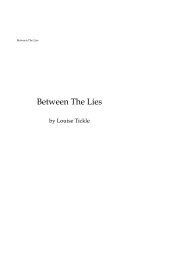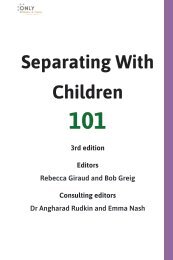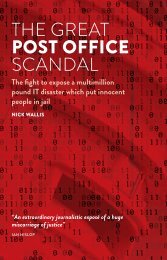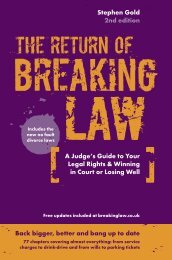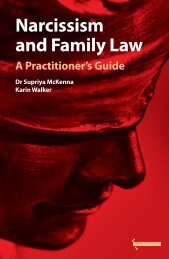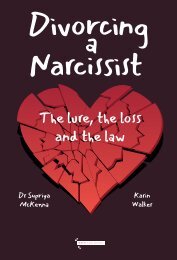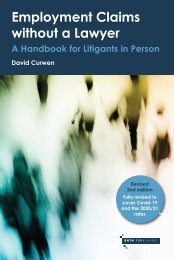Insolvency Made Clear: A Guide for Debtors
Plain English, practical guidance for anyone facing demands over a debt they are struggling to pay.
Plain English, practical guidance for anyone facing demands over a debt they are struggling to pay.
Create successful ePaper yourself
Turn your PDF publications into a flip-book with our unique Google optimized e-Paper software.
Effect Of Bankruptcy<br />
either voluntarily with written agreement of the bankrupt and the Trustee/OR,<br />
or by order of the court (s310A(6)).<br />
2.14 Distribution to creditors<br />
Once the Trustee has gathered funds, they will then make a distribution to creditors.<br />
The distribution must follow the statutory regime, which in outline is:<br />
• First, secured creditors will be paid. This includes mortgages, which are<br />
loans secured on the house. If the sale of the security does not cover the<br />
whole amount owed to the creditor, the remaining part is treated like an<br />
unsecured debt.<br />
• Second, bankruptcy expenses of the Trustee in Bankruptcy (see r10.149).<br />
This includes the Trustee’s fees; any expenses they spent on contesting debts;<br />
the costs of running the bankrupt’s business if the Trustee chooses to do<br />
so; and the costs of the petitioner’s petition which the court allowed. The<br />
significance of this, from the bankrupt’s perspective, is that the Trustee<br />
is likely to be relatively assured of having their fees paid and so, unlike<br />
unsecured creditors, is unlikely to be put off from lengthy negotiation and<br />
correspondence.<br />
• Third, preferential debts, which typically refers to unpaid wages, redundancy<br />
pay if the bankrupt had employees and certain taxes to HMRC.<br />
• Fourth, ordinary unsecured creditors.<br />
• Fifth, interest on any debt, which will accrue at 8% since the date of the<br />
bankruptcy order.<br />
• Sixth, debts to the bankrupt’s spouse.<br />
• Finally, any surplus remaining will go to the bankrupt themselves.<br />
If there is not enough to pay all the debts in the category, the amount which<br />
remains will be divided equally within the category. For example, if the estate<br />
is worth £10,000, the Trustee’s expenses come to £5,000, there are no preferential<br />
debts and there are unsecured debts of £50,000, the Trustee would be paid<br />
in full, and the unsecured creditors would each share the remaining £5,000:<br />
i.e. <strong>for</strong> each £1 of debt they are owed, they would receive 10p. A Trustee may<br />
discover that the individual has so few assets that it is not worth making a distribution<br />
at all.<br />
A bankrupt may have borrowed money from their own family. Family members<br />
will be treated as unsecured creditors – in particular, the family members<br />
33



